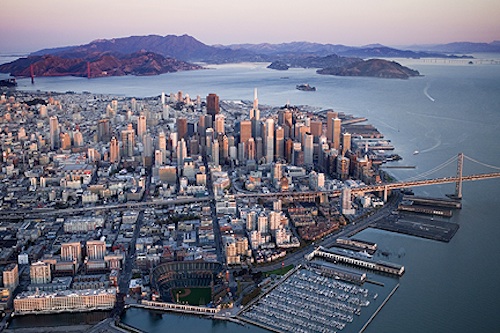Cities have regularly been of the mindset that if they lower taxes for businesses, said businesses will come running and put up shiny HQ buildings in said cities. In reality, that’s not the case; businesses like to be near available talent, not necessarily lower taxes. Millennials are about to own the workforce — GASP — and they seem to want some basic things out of where they live: public transportation, walkability, parks, good schools, and available jobs. So when LinkedIn does a study based on their data set of millions of companies and individuals and tries to rank the “most in-demand employers,” is it any surprise that five of the top 10 in-demand employers have their HQ in the Bay Area?
The top 10 was:
1. Google
2. Apple
3. Amazon
4. Facebook
5. Salesforce
6. Walt Disney
7. NIKE
8. Microsoft
9. McKinsey
10. PepsiCo
Actually, only two of these companies have a global HQ on the east coast — Pepsi and McKinsey — and pretty much the rest of the list is Bay Area / Portland / Seattle / Los Angeles (Disney).
A couple of observations:
1. This list shouldn’t surprise anyone, but the underlying reasons behind it probably confuse people. First of all, these companies above have billions of dollars. That means they can afford to think a little bit more about employee perks and whatnot as opposed to a small or mid-size company, which probably spends a good deal of its time thinking about how to remain competitive (these companies do too, they just have a bigger cushion and more people to throw at problems). The three smallest companies on the “in-demand” list were the Gates Foundation (itself a massive place), Netflix, and Razorfish. Again, those companies do have money, which helps. Often people think “employee engagement” or “places where people want to work” is all about beer fridges and volleyball courts. Nope. That stuff is cool, but what really matters are things like opportunities for training, legitimate communication methods, logical plans and ability to move up, relevant performance evaluations, good managers, and hell, just straight up working hard.
2. A lot of this contextually has to do with workplace shifts that might happen when millennials become the center of the workforce; what will they value? Will hierarchy go away in its purest form?
3. The fact that banks fell off this type of list — there’s a bank at No. 30 and Goldman Sachs is near the bottom of the top 50, at No. 49 — might prove that while people love to discuss how busy they are, they don’t actually like the idea of being overworked.
4. For years, “employee engagement” wasn’t a big thing in terms of getting the best people; salary and benefits were. Now it seems to be the big thing in terms of both getting and retaining people; the CEOs who make the biggest jump for their companies in the next 10-20 years will be people that understand this (I mean, it helps to have good product lines and marketing campaigns, but those can fall apart in the hands of less-than-stellar people, and you can lose your stellar people without focusing here).
5. I really do think it’s probably a mistake to have the same division that handles broader compliance issues also handle “innovative approaches to engaging employees” — you can’t have someone be office cop and office champion from one minute to the next — so some workplaces may have to redesign how they think about the ideas of actually engaging their people.
6. What’s gonna happen as these places that people want to live and work get too expensive? Will other places crop up? You’re starting to see this a little bit already.

Reblogged this on Gr8fullsoul.